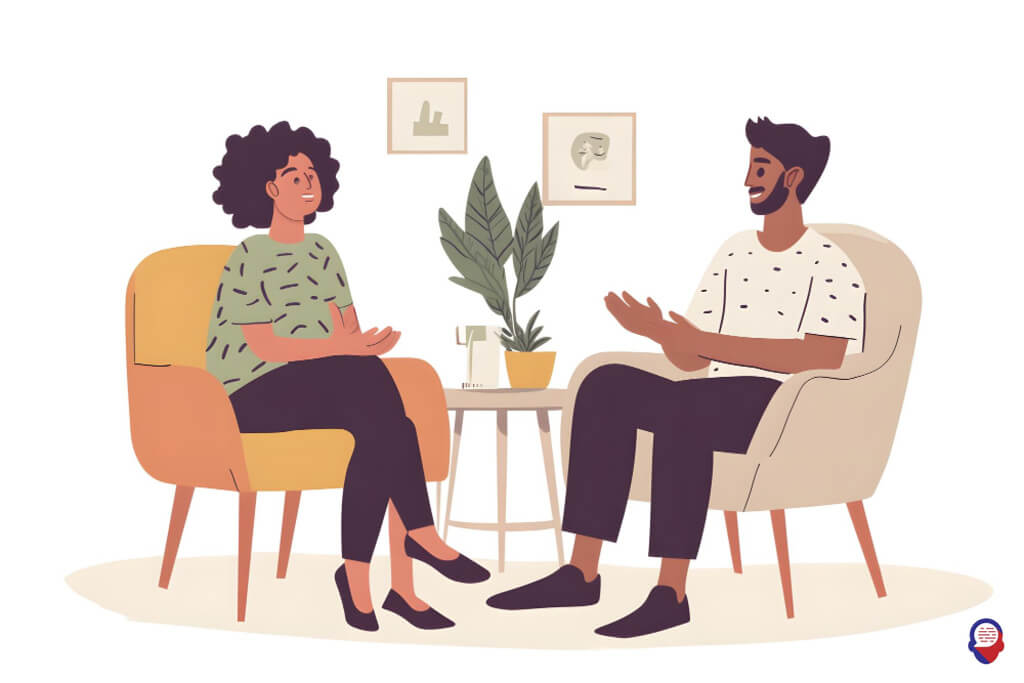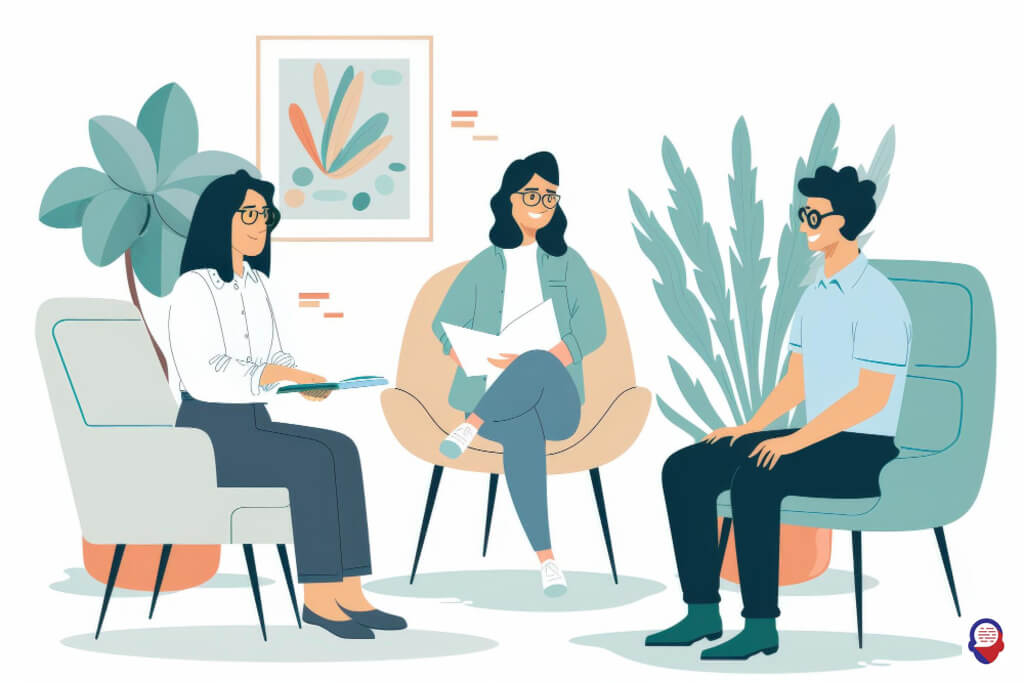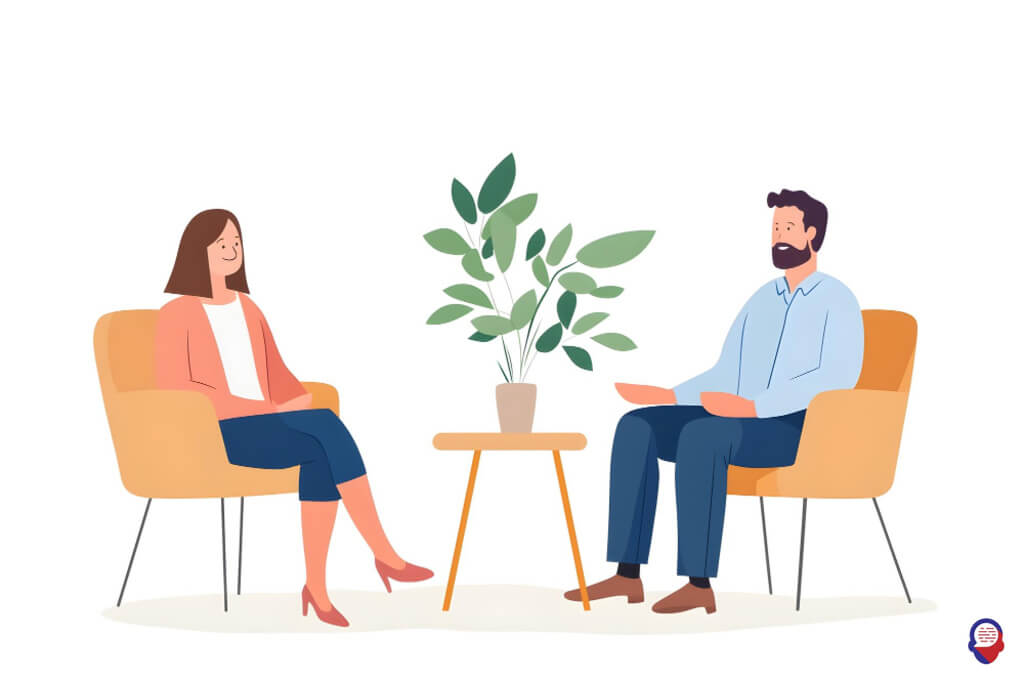A Complete Guide to Dialectical Behavior Therapy
Life can feel overwhelming. It’s a feeling many of us know. It’s the sensation of being adrift on a stormy sea of your own emotions, where every wave threatens to pull you under. You might feel things more intensely than others, react more strongly, and struggle to find your way back to calm. If this sounds familiar, you are not alone, and there is a powerful, evidence-based therapy designed specifically to provide you with a life raft, a compass, and the skills to navigate these turbulent waters. It’s called Dialectical Behavior Therapy, or DBT.
This comprehensive guide will walk you through the core principles, skills, and structure of DBT. We will demystify its concepts and show you how this transformative approach helps people build a life they genuinely feel is worth living. It’s not about eliminating emotions, but about learning to live with them, to understand them, and to be the one in control, not the other way around. This is your map to understanding DBT in a nutshell.

What is Dialectical Behavior Therapy?
Dialectical Behavior Therapy is a type of cognitive-behavioral psychotherapy that provides individuals with practical skills to manage painful emotions and decrease conflict in relationships. It was developed to help people learn how to live in the moment, develop healthy ways to cope with stress, regulate their emotions, and improve their relationships with others. At its core, DBT is a therapy of balance, blending acceptance and change.
Think of it as a highly structured toolkit. While traditional talk therapy might explore the ‘why’ behind your feelings, DBT focuses intensely on the ‘how’. How do you get through a moment of intense crisis without making things worse? How do you ask for what you need from a loved one effectively? How do you understand and change emotions that are causing you pain? DBT provides concrete answers and skills for these very questions.
It operates on the assumption that many people struggling with intense emotions are doing the best they can, yet they lack the necessary skills to manage their internal and external worlds effectively. DBT doesn’t just treat symptoms, it teaches a new way of living, empowering individuals with four key sets of skills that can be applied to every facet of life, from a moment of quiet panic to a difficult conversation with a boss.

Who was DBT originally designed for?
DBT was originally developed in the late 1980s by Dr. Marsha Linehan to more effectively treat chronically suicidal individuals diagnosed with Borderline Personality Disorder (BPD). Dr. Linehan found that traditional cognitive-behavioral approaches, which are heavily focused on change, often felt invalidating to these clients, who would then shut down or drop out of therapy. They needed something more.
She recognized that these individuals were living with extreme emotional sensitivity and reactivity. They needed a therapeutic approach that simultaneously validated their intense pain (acceptance) while also pushing them to make necessary changes to build a better life (change). This blend of acceptance and change became the foundation of DBT.
While it began as a specialized treatment for BPD, the effectiveness of DBT has led to its adaptation for a much wider range of mental health challenges. Today, it is used to treat conditions including substance use disorders, eating disorders like bulimia and binge eating, post-traumatic stress disorder (PTSD), and treatment-resistant depression and anxiety. The skills are so universally helpful that many people without a formal diagnosis find them invaluable for navigating life’s everyday challenges.

What does ‘dialectical’ actually mean?
The term ‘dialectical’ means a synthesis or integration of opposites. In DBT, the primary dialectic is the balance between acceptance and change. This concept is the very heart and soul of the therapy, providing a framework that is both validating and motivating.
At first glance, acceptance and change seem like complete opposites. How can you accept yourself and your situation exactly as they are, while also working tirelessly to change? DBT teaches that these two truths can and must coexist. You can accept that in this moment, you are feeling intense emotional pain, and that this pain is valid. Simultaneously, you can commit to making changes so that you are less likely to experience this same pain in the future.
This dialectical worldview helps people move away from rigid, ‘all-or-nothing’ thinking, which is a common source of distress. Instead of seeing the world in black and white, you learn to see the shades of grey. It’s the understanding that you can be doing your best and still need to do better. You can be strong and vulnerable at the same time. This flexible thinking reduces judgment, increases compassion for oneself and others, and opens the door to real, lasting change.

What are the core skills taught in DBT?
DBT is fundamentally a skills-based therapy, organized into four main modules that work together to create a comprehensive toolkit for building a life worth living. These modules are Mindfulness, Distress Tolerance, Emotion Regulation, and Interpersonal Effectiveness. Each module targets a specific area of struggle and provides concrete, learnable skills to address it.
These skills are typically taught in a group setting, much like a class, where a therapist teaches the concepts and assigns homework for participants to practice the skills in their daily lives. This is then supplemented with individual therapy to help the client apply these skills to their specific personal challenges. The combination of learning and application is what makes DBT so powerful and effective.
Think of these four modules as the four pillars of a well-built house. Without any one of them, the structure is unstable. But when all four are strong and working together, they create a safe, stable, and resilient home within yourself, capable of weathering any storm that life throws your way.

What is mindfulness in DBT?
Mindfulness in DBT is the foundational skill upon which all other skills are built. It is the practice of being fully aware and present in the current moment, non-judgmentally. It involves intentionally paying attention to your thoughts, feelings, bodily sensations, and the world around you without getting caught up in them.
Mindfulness skills are divided into two sets: the ‘What’ skills and the ‘How’ skills. The ‘What’ skills are Observe, Describe, and Participate. This means observing your internal and external environment without reacting, putting words to what you observe, and throwing yourself fully into the activities of the current moment. It’s about being an observer of your own experience, not a victim of it.
The ‘How’ skills guide the attitude you bring to mindfulness: Non-judgmentally, One-mindfully, and Effectively. This means letting go of judging your experiences as ‘good’ or ‘bad,’ focusing on one thing at a time, and doing what works to achieve your goals. By mastering mindfulness, you create a space between a trigger and your reaction, giving you the power to choose how you respond instead of being driven by automatic, painful habits.

What is distress tolerance?
Distress Tolerance skills are about surviving crisis situations without making them worse. These are not skills for making your life better in the long run, they are skills for getting through the immediate pain of a difficult moment. They are for the times when you feel overwhelmed by emotion and have the urge to engage in impulsive or self-destructive behaviors.
A key concept here is ‘radical acceptance.’ This means fully and completely accepting reality for what it is, without judgment, bitterness, or denial. It doesn’t mean you have to like the reality, but you must accept it in order to effectively deal with it. Fighting against reality only creates more suffering.
The module also teaches concrete crisis survival skills. These include techniques like distracting yourself with healthy activities, self-soothing through your five senses (like listening to calming music or holding a warm mug), improving the moment by finding small positives, and weighing the pros and cons of tolerating the distress versus acting on destructive urges. These skills are your emergency toolkit for when emotional fires are raging.

What is emotion regulation?
Emotion Regulation skills help you understand and manage your emotions in a more balanced way. For many people who need DBT, emotions can feel like mysterious, uncontrollable forces. This module demystifies them, teaching you that emotions are not your enemy, but rather important sources of information.
The first step is learning to identify and label your emotions, understanding what purpose they serve, and recognizing what triggers them. This knowledge alone can reduce the feeling of being controlled by them. You learn to check the facts of a situation to see if your emotional reaction fits the reality of what is happening.
Next, you learn skills to change unwanted emotional responses. This includes ‘opposite action,’ which involves acting opposite to your emotional urge when the emotion is unjustified or unhelpful. For example, if you feel the urge to isolate because of sadness, opposite action would be to call a friend. You also learn skills to reduce your vulnerability to negative emotions in the long term, such as taking care of your physical health, getting enough sleep, and building positive experiences into your daily life.

What is interpersonal effectiveness?
Interpersonal Effectiveness skills are about building and maintaining healthy relationships while also maintaining your self-respect. These skills teach you how to navigate social interactions successfully, which is often a major area of difficulty for individuals with intense emotions. It’s about finding the balance between getting your needs met, keeping your relationships healthy, and feeling good about yourself.
This module teaches specific, structured strategies for communicating your needs, saying no, and handling conflict. One of the most well-known skill sets is summarized by the acronym DEAR MAN, which guides you in how to make a request or state a position effectively: Describe the situation, Express your feelings, Assert your needs, and Reinforce the other person.
In addition to getting what you want, you learn skills for maintaining the relationship (the GIVE skills: be Gentle, act Interested, Validate, use an Easy manner) and for maintaining your self-respect (the FAST skills: be Fair, no Apologies, Stick to your values, be Truthful). By learning these skills, you can move from a pattern of chaotic or failed relationships to one of stable, rewarding connections.

What does a typical DBT program involve?
A comprehensive, or ‘adherent,’ DBT program is quite intensive and has four main components that work together. It is not just one hour of therapy per week, it is a multi-faceted approach designed to provide robust support and facilitate real-world skill application.
The first component is the weekly skills training group. This is a 2 to 2.5-hour session, run like a class, where therapists teach the four skills modules. The second component is weekly individual psychotherapy. In these sessions, the therapist helps the client apply the learned skills to their specific life challenges, address therapy-interfering behaviors, and stay motivated.
The third component is phone coaching. Clients are able to call their individual therapist between sessions for in-the-moment coaching on how to use DBT skills to cope with difficult situations as they arise in real time. The final component is the therapist consultation team. DBT therapists meet weekly to support each other in providing the best possible treatment, ensuring they remain effective and adherent to the model.

How is DBT different from CBT?
DBT is a type of Cognitive Behavioral Therapy (CBT), so they share common ground, but there are key differences in their focus and approach. CBT primarily focuses on identifying and changing unhelpful patterns of thinking and behavior. It is highly effective for many conditions, particularly anxiety and depression, by targeting the cognitive distortions that lead to distress.
DBT incorporates the change strategies of CBT but adds a crucial, balancing element: acceptance. The emphasis on mindfulness and validation is a major distinction. While CBT is about changing thoughts, DBT teaches you to first notice and accept your thoughts and feelings without judgment, creating a foundation of self-validation before moving toward change. This acceptance component is what makes DBT particularly effective for individuals who experience emotions with overwhelming intensity.
Furthermore, DBT is more structured and comprehensive in its delivery. The four-component model of skills group, individual therapy, phone coaching, and consultation team is unique to adherent DBT. It also places a much stronger emphasis on the therapeutic relationship as a vehicle for modeling validation and effective communication, and it explicitly teaches skills for interpersonal effectiveness and distress tolerance, which are not central pillars of traditional CBT.

What are the benefits of learning DBT skills?
Learning and practicing DBT skills can lead to profound and life-altering benefits, extending far beyond the therapy room. The most immediate benefit is a significant reduction in crisis behaviors. Individuals learn to navigate intense emotional distress without resorting to self-harm, substance use, or other impulsive actions that make life worse.
Over time, people report a greater sense of control over their emotional lives. Instead of being swept away by every feeling, they develop the ability to understand, influence, and tolerate their emotions. This leads to increased emotional stability and a decrease in the dramatic ups and downs that cause so much suffering. Relationships also improve dramatically as individuals learn to communicate their needs clearly and respectfully, set healthy boundaries, and navigate conflict without destroying connections.
Ultimately, the goal and greatest benefit of DBT is building a life that feels genuinely worth living. It’s about more than just reducing symptoms, it’s about creating a life filled with meaning, connection, and joy. By equipping individuals with practical, real-world skills, DBT empowers them to move from a life of quiet desperation to one of purpose and fulfillment.
Frequently Asked Questions

Is DBT only for Borderline Personality Disorder?
No, it is not. While DBT was originally created for individuals with BPD, its effectiveness has led to its successful adaptation for a wide range of other issues. It is now commonly used to treat eating disorders, substance use disorders, PTSD, and chronic depression. The skills themselves are so universally applicable that many people find them helpful for simply managing stress and improving their relationships, even without a formal mental health diagnosis.

How long does DBT treatment usually take?
A comprehensive DBT program is a significant commitment. A full course of treatment, covering all four skills modules, typically lasts between six months and one year. The skills group cycles through the modules, and consistency is key to mastering the skills and being able to apply them automatically in daily life. While this may seem like a long time, the goal is to create deep, lasting changes in behavior and coping patterns.

Can I learn DBT skills on my own?
You can certainly learn about DBT skills on your own through books, workbooks, and online resources, and doing so can be very beneficial. However, learning the skills is different from effectively integrating them into your life, especially when you are in a state of high emotional distress. The full therapeutic program, with its combination of skills groups, individual therapy, and in-the-moment coaching, provides the structure, support, and expert guidance that is often necessary for profound and lasting change. A therapist can help you troubleshoot when skills aren’t working and tailor the approach to your unique challenges.

The journey of understanding and managing your emotions is one of the most important you can ever take. Learning about Dialectical Behavior Therapy is a courageous first step. But knowledge is only the beginning. Putting these powerful skills into practice, with guidance and support, is where true transformation happens.
At Counselling-uk, we understand that reaching out for help requires strength. We are here to provide a safe, confidential, and professional place to explore these challenges. If you feel that the principles of DBT resonate with you, our dedicated therapists can help you build a life that feels more balanced, manageable, and meaningful. You don’t have to navigate life’s challenges alone. Let’s take the next step together.




DBT works by teaching skills in four main areas: mindfulness, distress tolerance, emotion regulation, and interpersonal effectiveness. Mindfulness helps people become more aware of their thoughts and feelings so they can make better decisions in the moment. Distress tolerance teaches people to accept difficult or uncomfortable emotions without becoming overwhelmed or acting impulsively. Emotion regulation helps individuals learn how to identify their emotions and manage them in a healthy way. Lastly, interpersonal effectiveness teaches individuals how to communicate assertively while maintaining relationships with others.
Dialectical Behavior Therapy (DBT) is a type of cognitive behavioral therapy that focuses on helping people regulate their emotions and behaviors. It was developed in the late 1980s by Marsha Linehan, a professor of psychology at the University of Washington. DBT is used to treat a variety of mental health conditions, including borderline personality disorder, depression, post-traumatic stress disorder, and substance abuse. The core concepts of DBT include mindfulness, interpersonal effectiveness, distress tolerance, and emotion regulation.